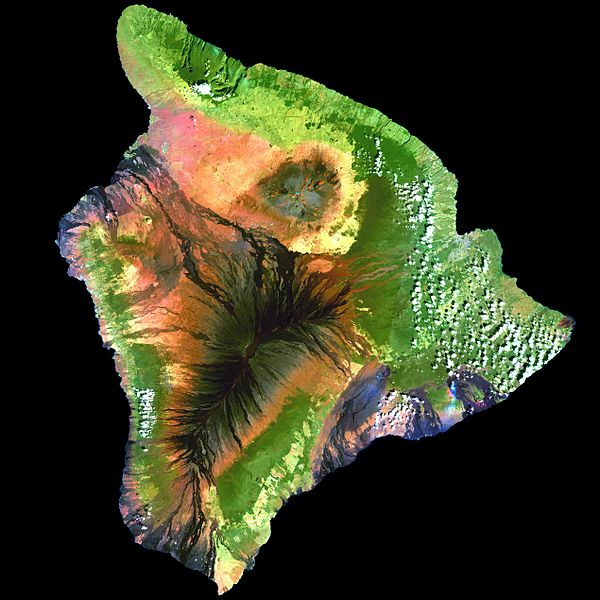پرونده:Island of Hawai'i - Landsat mosaic.jpg

اندازهٔ این پیشنمایش: ۶۰۰ × ۶۰۰ پیکسل. کیفیتهای دیگر: ۲۴۰ × ۲۴۰ پیکسل | ۴۸۰ × ۴۸۰ پیکسل | ۷۶۸ × ۷۶۸ پیکسل | ۱٬۰۲۴ × ۱٬۰۲۴ پیکسل | ۲٬۰۴۸ × ۲٬۰۴۸ پیکسل | ۵٬۰۷۶ × ۵٬۰۷۶ پیکسل.
پروندهٔ اصلی (۵٬۰۷۶ × ۵٬۰۷۶ پیکسل، اندازهٔ پرونده: ۵٫۱۹ مگابایت، نوع MIME پرونده: image/jpeg)
تاریخچهٔ پرونده
روی تاریخ/زمانها کلیک کنید تا نسخهٔ مربوط به آن هنگام را ببینید.
| تاریخ/زمان | بندانگشتی | ابعاد | کاربر | توضیح | |
|---|---|---|---|---|---|
| کنونی | ۱ سپتامبر ۲۰۰۹، ساعت ۱۱:۵۹ |  | ۵٬۰۷۶ در ۵٬۰۷۶ (۵٫۱۹ مگابایت) | Túrelio | saved with 95% quality (low compression), but without "progressive" option |
| ۱ سپتامبر ۲۰۰۹، ساعت ۱۱:۵۹ |  | ۵٬۰۷۶ در ۵٬۰۷۶ (۴٫۹ مگابایت) | Bidgee | Fix thumbnail generation issue caused by progressive loading. | |
| ۱ سپتامبر ۲۰۰۹، ساعت ۱۱:۳۱ |  | ۵٬۰۷۶ در ۵٬۰۷۶ (۴٫۹۱ مگابایت) | Rocket000 | reuploading | |
| ۲۷ دسامبر ۲۰۰۷، ساعت ۱۱:۵۲ |  | ۵٬۰۷۶ در ۵٬۰۷۶ (۴٫۹۱ مگابایت) | Avenue | {{Information| |Description=This simulated true-color image of the island of Hawai'i was derived from data gathered by the Enhanced Thematic Mapper plus (ETM+) on the Landsat 7 satellite between 1999 and 2001. |Source=[http://veimages.gsfc.nasa.gov/2712/l |
کاربرد پرونده
صفحههای زیر از این تصویر استفاده میکنند:
کاربرد سراسری پرونده
ویکیهای دیگر زیر از این پرونده استفاده میکنند:
- کاربرد در af.wikipedia.org
- کاربرد در ar.wikipedia.org
- کاربرد در ast.wikipedia.org
- کاربرد در az.wikipedia.org
- کاربرد در be.wikipedia.org
- کاربرد در bn.wikipedia.org
- کاربرد در br.wikipedia.org
- کاربرد در ca.wikipedia.org
- کاربرد در ceb.wikipedia.org
- کاربرد در cy.wikipedia.org
- کاربرد در de.wikipedia.org
- کاربرد در de.wikivoyage.org
- کاربرد در en.wikipedia.org
- Hawaii (island)
- Mauna Loa
- Landsat program
- Geoinformatics
- Puna, Hawaii
- User:Spikebrennan
- Portal:Hawaii/Selected article
- Portal:Hawaii/Selected article/11
- Wikipedia:Featured picture candidates/February-2008
- Wikipedia:Featured picture candidates/Big Island of Hawai'i
- User:Hawaiian Mafia
- User:Aoi/sandbox
- کاربرد در es.wikipedia.org
- کاربرد در es.wikibooks.org
- کاربرد در eu.wikipedia.org
- کاربرد در fr.wikipedia.org
- کاربرد در fr.wikivoyage.org
- کاربرد در ga.wikipedia.org
- کاربرد در haw.wikipedia.org
- کاربرد در he.wikipedia.org
- کاربرد در hi.wikipedia.org
- کاربرد در hu.wikipedia.org
- کاربرد در ia.wikipedia.org
- کاربرد در id.wikipedia.org
- کاربرد در incubator.wikimedia.org
- کاربرد در is.wikipedia.org
- کاربرد در ja.wikipedia.org
- کاربرد در jv.wikipedia.org
- کاربرد در kk.wikipedia.org
نمایش استفادههای سراسری از این پرونده.
